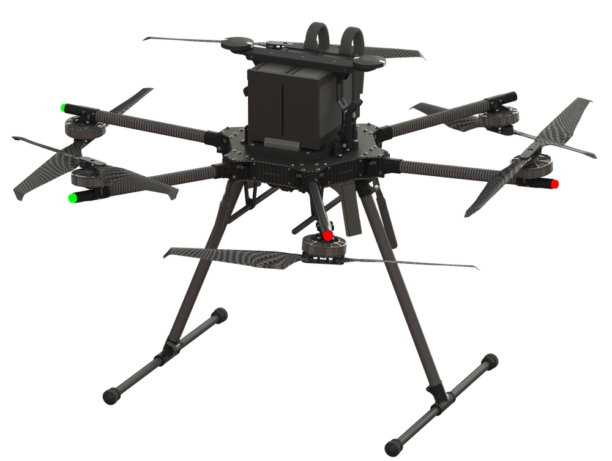Defense Innovation Unit Expands Blue UAS List with New Platforms and Capabilities
On March 20, 2025, the Defense Innovation Unit (DIU) unveiled important enhancements to its Blue UAS List and Framework, following a recent three-day flight demonstration challenge that took place at the Marine Corps Air Ground Combat Center in 29 Palms. This event, conducted in February 2025, is planned to be held annually to continuously update the capabilities included in the Blue List and Framework.
New Additions and Expanded Capabilities
Service evaluators have approved 23 platforms along with 14 unique components and capabilities for verification under the National Defense Authorization Act (NDAA) and cybersecurity assessment. These additions feature First Person View (FPV), Group 3, and tethered platforms—designed in direct response to operator feedback and evolving operational needs.
The enhancements aim to equip Department of Defense (DoD) personnel with sophisticated capabilities significantly ahead of existing DoD program timelines. The updated list showcases a variety of platforms from diverse manufacturers, including Hoverfly Spectre, Neros Archer, ModalAI Stalker, and Zone 5 Paladin.
Blue UAS Framework Components
The Blue UAS Framework, containing a registry of interoperable, NDAA-compliant UAS components and software, has also been revised. Newly added essential components include contributions from ARK Electronics, Locus Lock, Mobilicom, Tilt Autonomy, and Vertiq.
Evaluation Criteria and International Participation
Evaluators concentrated on several critical capabilities essential for end-users, such as:
- Flight ease
- Learning curve
- Flight performance
- Advanced features like payload capacity and resistance to GPS denial
This challenge attracted 369 proposals from companies not only from the U.S. but also from 18 other nations, showcasing significant advancements in the commercial UAS sector.
Significance for the DoD and Industry
The Blue UAS List and Framework are vital for providing DoD-approved unmanned aerial systems for official use, aligning with stringent regulations, including the 2024 American Security Drone Act and pertinent sections of the NDAA. The addition of these new platforms and components is anticipated to dramatically decrease the time required for delivering drones to frontline personnel. Traditionally, DoD processes have lagged considerably behind operational needs; however, the Blue UAS initiative seeks to promptly furnish necessary capabilities.
As the DIU finishes the NDAA and cybersecurity verification process, updates to the Blue UAS List and Framework will be announced on their official site. This continuous development assures the DoD’s access to leading-edge, secure, and regulatory-compliant drone technology.
Beyond the Blue UAS List
While the Blue UAS List has gained acknowledgment as an endorsement of drone security within defense applications, its limited focus raises some concerns among U.S. manufacturers. Many of these companies fear that relying heavily on the Blue UAS list might disadvantage other NDAA-compliant drones that, while not tailored for military operations, are still viable in commercial and civilian contexts.
To address these issues, the Association for Uncrewed Vehicle Systems International (AUVSI) has initiated the Green UAS certification program. This project aspires to create a broader framework for evaluating drone security and compliance, accommodating the necessities of non-defense sectors while upholding stringent standards for cybersecurity and NDAA compliance.
Blue UAS vs. Green UAS for the Broader Market
The Green UAS certification transcends basic NDAA demands, integrating evaluations of corporate cyber hygiene, product security, remote operations, and supply chain management. This all-encompassing method ensures that certified drones achieve the highest standards of cybersecurity, operational integrity, and performance—critical attributes for sectors like law enforcement, civic authorities, and utility companies that depend on secure, reliable drones.
A notable distinction between Blue and Green UAS certifications is that Green UAS-certified drones feature Remote ID (RID) capabilities, granting them permission for commercial airspace operations as per existing FAA regulations, whereas Blue UAS-certified drones may lack this functionality, restricting their use in non-military applications.
As defense requirements become more complex, the Green UAS list offers a more adaptable and inclusive structure for drone certification, serving as a bridge between government security obligations and broader market demands, and ensuring a wider array of secure, NDAA-compliant drone technologies are accessible across various industries, including public safety, critical infrastructure, and agriculture.
The Green UAS program also paves the way for Blue UAS-certified drones to transition to the Green UAS list, broadening their potential applications beyond military operations.
Want the latest news from DRONELIFE delivered directly to your inbox? Sign up here.
Read more:
- Pierce Aerospace B1 Remote ID Beacon Selected for DIU’s Blue UAS Framework
- Esri Integrates Blue UAS Cleared Drone with ArcGIS Flight
- Green UAS Certification Expands Secure Drone Options for Public Safety and Critical Missions
Article Authored By: Miriam McNabb, Editor-in-Chief of DroneLife













